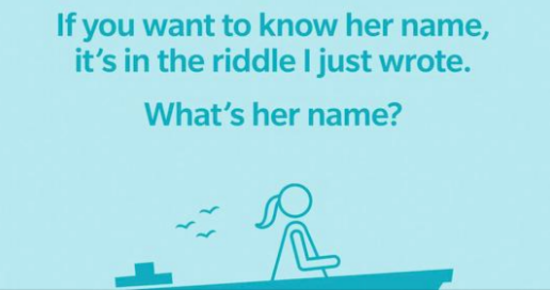In today’s digital age, entertainment and education are just a click away. However, taking a break from our screens to engage in puzzles and brain teasers can be incredibly rewarding. Recently, a series of riddles has taken the internet by storm, challenging even the most experienced puzzle solvers.
The first riddle, known as the “woman in a boat riddle,” is a perfect example of a clever and concise puzzle. It reads: “There is a woman in a boat, on a lake, wearing a coat. If you want to know her name, it’s in the riddle I just wrote. What’s her name?” The answer is not a traditional name, but rather a clever play on words.

The key to solving this riddle is to pay close attention to every detail and not overthink the solution. The answer is hidden in plain sight, and it requires a creative and lateral thinking approach. The solution is “There,” which is technically correct, although it’s not a conventional name.
Another riddle that requires attention to detail is the “sons and daughters” puzzle. It states: “Mr. Smith had four daughters. Each of his daughters had a brother. How many children does Mr. Smith have?” At first glance, it seems like there’s not enough information to provide an exact answer. However, the solution is surprisingly simple.
The answer is “5,” which might seem counterintuitive at first. However, the key is to pay attention to the language used in the riddle. The statement “each of his daughters had a brother” implies that there is only one brother, and each daughter shares the same brother.
The final riddle, “London Bridge,” is a bit more complex and requires a combination of creativity and phonetic awareness. It reads: “I met a man on London Bridge. He tipped his hat and drew his name. He cheated at the guessing game. What was the man’s name?” The answer is not immediately obvious, but it requires a close reading of the text and an understanding of how words can sound when spoken aloud.
The solution is “Andrew,” which might seem surprising at first. However, when you read the sentence “He tipped his hat and drew his name” aloud, it sounds like “Andrew’s his name,” which is a direct answer to the question.
These riddles are a great example of how puzzles can challenge our thinking and encourage creativity. They require attention to detail, lateral thinking, and a willingness to think outside the box. So, if you’re looking for a fun and challenging way to exercise your brain, give these riddles a try!


